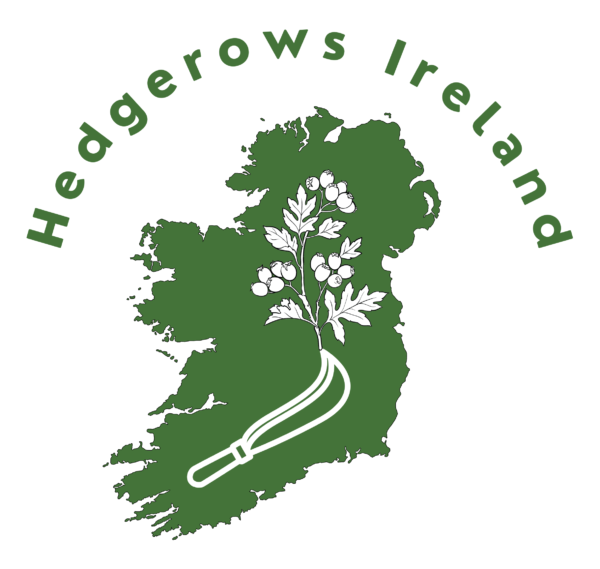
Fireblight in Ireland
Learn about the Fireblight disease and how it affects Hawthorn.
What is Fireblight?
Fireblight (Erwinia amylorova) is a bacterial disease whose common hosts include Hawthorn, Cotoneaster, apple, pear, and rowan. Symptoms include the withering of shoots and leaves (‘Shepherd’s Stick’), cankers, and bacterial ooze. Fireblight is known to enter through latent infections on imported plants and is suited to our temperate climate. It is widespread in Northern Ireland and has been found in the wider environment in all counties in the Republic of Ireland by the Department of Agriculture, Food and the Marine (DAFM). In 2025, the Plant Health Stakeholder Network and the general public were notified that the Republic of Ireland would apply to remove its Protected Zone status for Fireblight. This is because it is found in the wider environment and sites where intensive eradication efforts have not succeeded within 24 months, which are requirements to retain the status under EU legislation.
You can learn more about this change and what it means for Fireblight in Ireland by reading these information sheets:
- Main Resource: FAQs on Fireblight – Transition from being a Protected Zone to a Union Regulated Non-Quarantine Pest (RNQP).
- DAFM’s Fireblight Plant Pest Sheet
- EPPO Global Database: Fireblight Datasheet
- DEFRA Fireblight Leaflet
In regard to Hawthorn, the DAFM FAQ document on Fireblight says, “From a biodiversity perspective, concerns have been raised regarding the possible long-term effect of Fireblight on Crataegus monogyna (Hawthorn) hedgerows in Ireland, which are abundant in the wider environment. While there is little published research on the potential impact of Fireblight in the Crataegus (Hawthorn) hedges in Ireland and across Europe, significant impacts are not expected. Fireblight has been present in the UK since at least 1957 and significant impacts on typical hedgerow species, such as Crataegus (Hawthorn), have not been observed in the 68-year intervening period. Similarly, in Northern Ireland the pest has been acknowledged as widespread in the environment since at least 2015. Since Northern Ireland deregulated its PZ zone status in 2018 no impacts of note have been reported. Reports from the UK have consistently found Crataegus (Hawthorn) to act as a reservoir of the disease while not being significantly impacted.”
What can you do about it?
1. Read the DAFM Fireblight FAQs Document.
Integrated Pest Management, pruning and destroying infected material in line with DAFM guidelines, and regular disinfection of tools or machinery can help to reduce the risk of Fireblight and other pests and diseases.
2. Plant Irish Provenance trees – and encourage others to do the same.
To prevent the spread of other plant pests and diseases, if you’re planting a hedgerow, make sure to ask your supplier if the trees are of Irish Origin & Provenance. We have listed some potential suppliers here: www.hedgerows.ie/planting.
Encourage others to do the same! For example, your local garden centre, plant nursery, Tidy Towns, biodiversity group, or the Local Authority’s Parks Department.
Copy-Paste Template
3. Share information on Fireblight.
www.hedgerows.ie/fireblight/Our Fireblight Campaign
In 2024, Hedgerows Ireland CLG aimed to raise awareness of Fireblight amongst Irish landowners and the general public. This involved four main actions:
- We collaborated with An Taisce, the Environmental Pillar, and other environmental organisations to create an open letter which received almost 1500 signatures. You can read this here.
- We also organised a webinar with plant pathologist, Maria Cullen, on hedgerow pests and diseases. You can view this here.
- We published social media content across our various platforms showing the symptoms of Fireblight and where to report suspected cases.
- We engaged with newspapers, radio stations, and other media across Ireland to discuss Fireblight.
Unfortunately, the campaign did not prevent the spread of Fireblight in Ireland, due to the already widespread nature of Fireblight and how difficult it is to eradicate. As outlined in the DAFM FAQs document, the reason for Ireland’s application to remove the Protected Zone status stems from difficulties eradicating past findings within 24 months despite intensive eradication efforts. Therefore, our campaign asks, as outlined in the open letter, would not have changed the ultimate outcome regarding the Protected Zone status.
Nevertheless, we are grateful to everyone who helped us spread the word about Fireblight. We hope that you will continue to raise awareness of the risk that plant pests and diseases pose to Ireland’s biodiversity and agricultural sector. Prevention is better than cure, so it’s essential to continue promoting Irish Origin & Provenance Certified plants, using Integrated Pest Management, and disinfecting tools and machinery as necessary.
